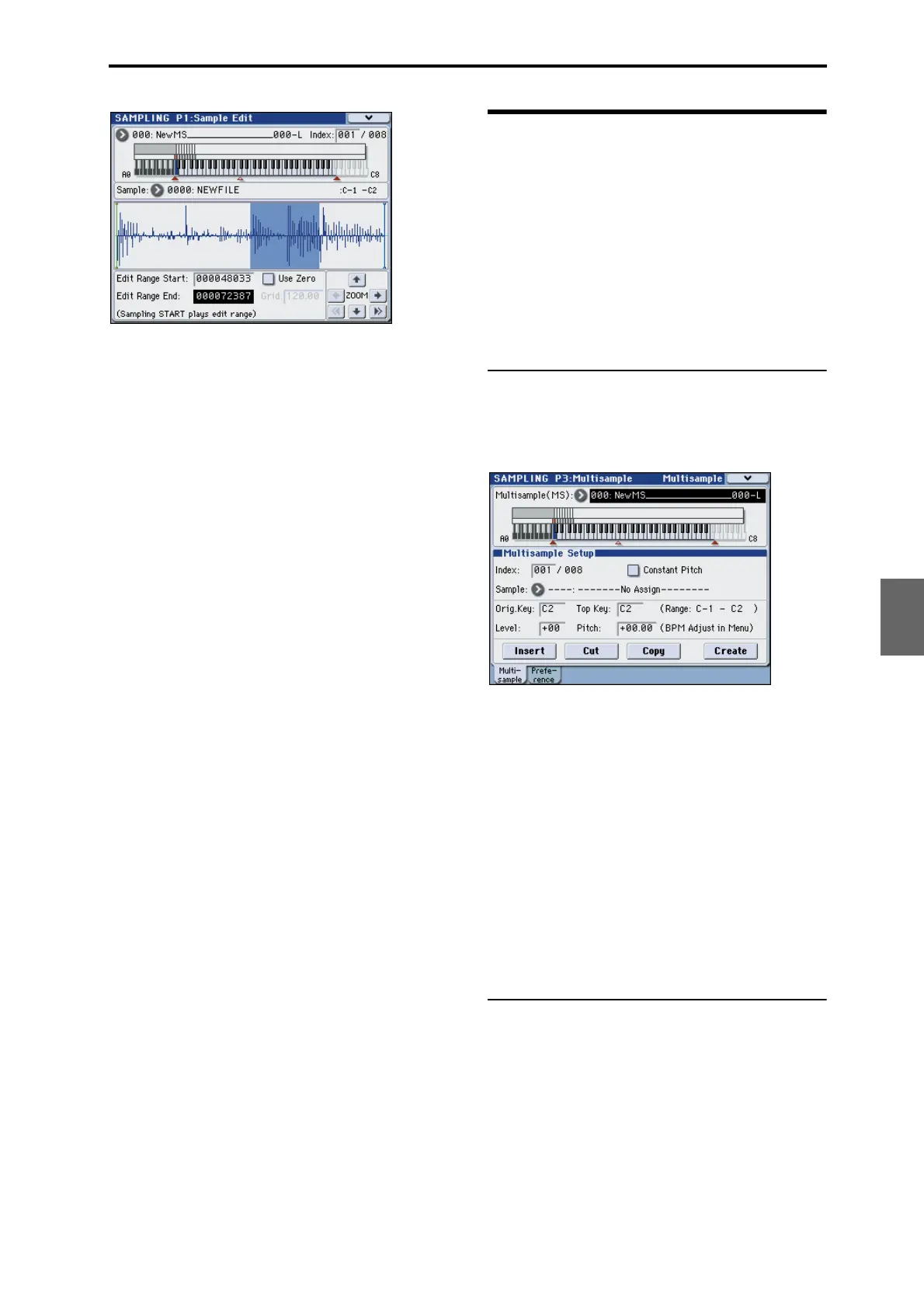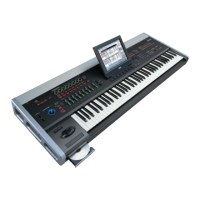Sampling and editing in Sampling mode Multisample editing – P3: Multisample Edit
119
Quick Start
Introduction
SetupProgram
Combination
Sequencer
SamplingGlobalMediaEffectKARMA
Drum Track
Other
Appendices
If you want to audition the selected region, press the
SAMPLING START/STOP switch. The selected region
will play at the pitch of the base key (the blue key in
the keyboard display). You can specify the base key by
holding down the ENTER switch and playing a note
on the keyboard.
When you play a key to which the sample is assigned
(the highlighted range of the keyboard displayed in
“Keyboard & Index”), the sample will be played back
according to its loop settings.
The procedure for using the ZOOM and Use Zero
check boxes is the same as for P2: Loop Edit.
4. From the list of menu, select the desired editing
command. Make the appropriate settings in the
dialog box, and press the OK button to execute.
For details on the many sample editing features, please
see “Sampling: Menu Command” on page 345 of the
Parameter Guide.
Multisample editing –
P3: Multisample Edit
Editing a multisample is accomplished with a number
of operations i.e. creating indexes for the multisample
and assigning a sample to each index, editing
operations such as deleting, copying, and inserting
indexes, and detailed settings such as sample level and
pitch for each index.
Multisample editing is performed in P3: Multisample.
You can also do some basic edits in the P0: Recording–
Recording page.
Editing the indexes
To change the number or order of the indexes, use the
Insert, Cut, Copy, and Create buttons.
1. Access the P3: Multisample Edit page.
2. Use “Multisample (MS)” to select the multisample
that you wish to edit.
3. Select the “Index.”
You can also select an index by holding down the
VALUE controller or ENTER switch and playing a note
on the keyboard or pad.
4. Press the buttons to modify the number or order of
the indexes, and edit them.
To delete the selected index, press the Cut button.
The Insert button is used in conjunction with the Cut
and Copy buttons. The contents of the index that was
Cut or Copied will be inserted.
The Create button has the same function as the Create
button in P0: Recording (see “Creating multisample
indexes and sampling – P0: Recording” on page 110).
Modifying the settings of an index
1. Make the settings described in steps 1–3 of
“Editing the indexes.”
2. Set parameters for the selected index.
• Use Sample to specify the sample for the selected
index. You can also select a sample here.
• Use OrigKey (Original Key) to specify the original
key of the sample.
• Changing the Top Key will change the upper limit
of the zone. Simultaneously, the lower limit of the
next-numbered index will also change. Range
